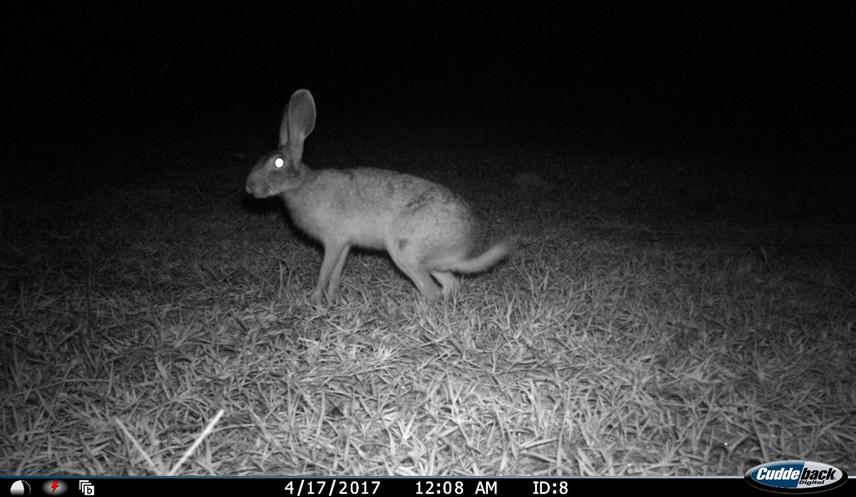Manoj Chaudhary
This project aims to determine the status and distribution of the Hispid hare in Parsa Wildlife Reserve and to develop a framework to support its conservation.

Lepus nigricollis recorded in Bhata grassland.
The Hispid hare Caprolagus hispidus (Pearson 1839) is an endangered species of the Order Lagomorpha. Despite its Endangered classification, little information is available currently to support the conservation of the Hispid hare, which remains poorly documented throughout its limited range across northern parts of the Indian subcontinent. The continuing decline in suitable habitat is being caused principally by agriculture, illegal hunting, fires and human disturbance. Little information is available currently to support the conservation and management of the species.
Records of Hispid population have been identified in Shuklaphanta Wildlife Reserve, Bardiya National Park, and Chitwan National Park. Parsa Wildlife Reserve, which is contiguous with Chitwan N.P., also supports extensive tracts of tall grassland yet the distribution of Caprolagus hispidus in this Reserve has never been researched. The study aims systematic study of Hispid hare in Parsa Wildlife Reserve to generate baseline information as to address conservation issues for this species. Social surveys, questionnaires, signs surveys (pellets, footprints, resting sites, tracks and grazing trails), strip line transect survey (pellet method) and camera trapping will be done to produce an updated distribution for Hispid hare in Parsa Wildlife Reserve, Nepal and to generate basic scientific information on Hispid status. Results from this research will be instrumental to wildlife managers and decision makers to promulgate appropriate planning process and proper policy for long term conservation and management of the Hispid hare in research site and the country as a whole. Seasonal variation comparison and their abundancy, preferred habitat and alarming issues in its dramatic decline will be documented from this research describing how it could be addressed and urgent need of conservation measures could be developed to halt its decreasing trend and increasing its number to normal level.
The result will also be helpful to generate awareness level and encourage participatory approach model to counter problems of target species bringing effective conservation actions in the park and other forested area close to villages. This research will be an effort to document the presence/absence and distribution of hispid hare to the unexplored Parsa Wildlife Reserve.